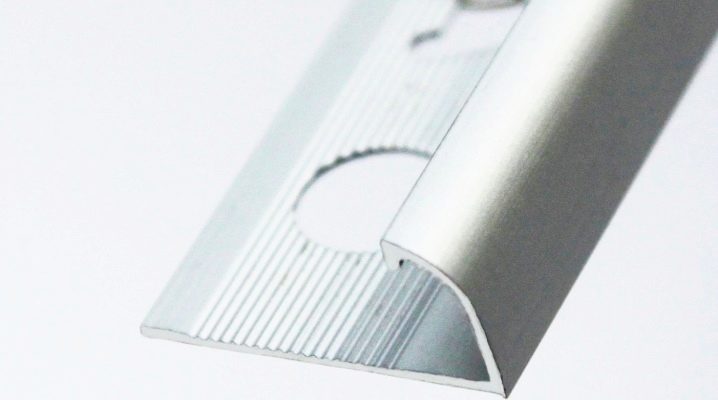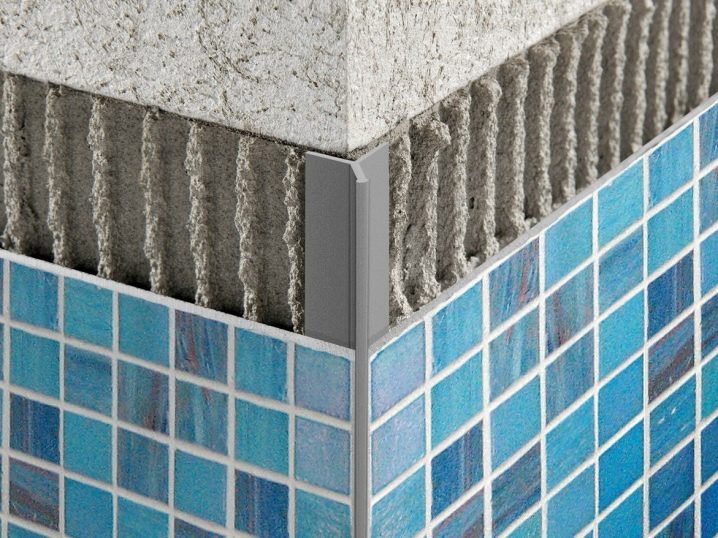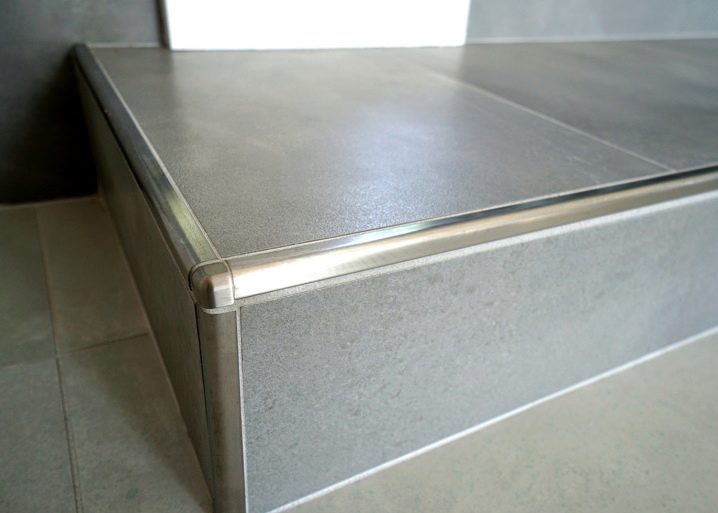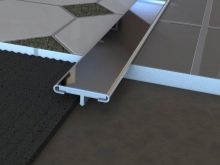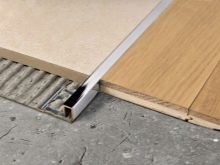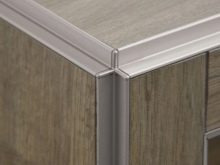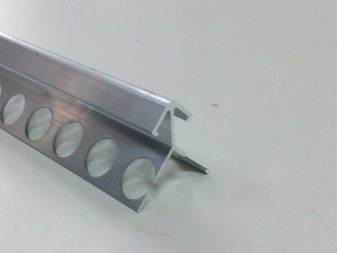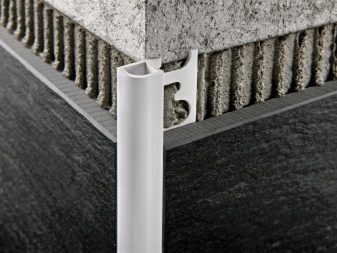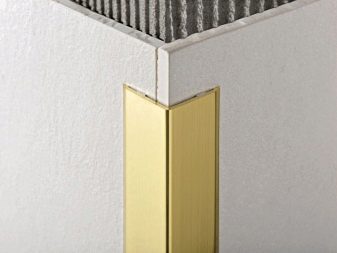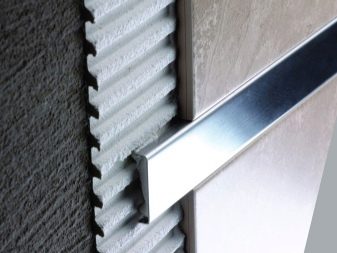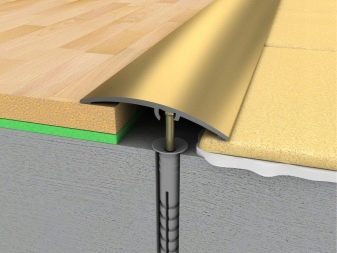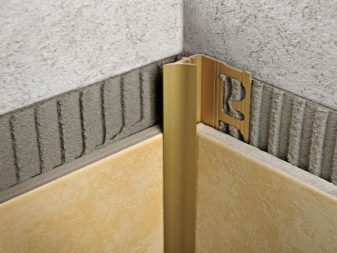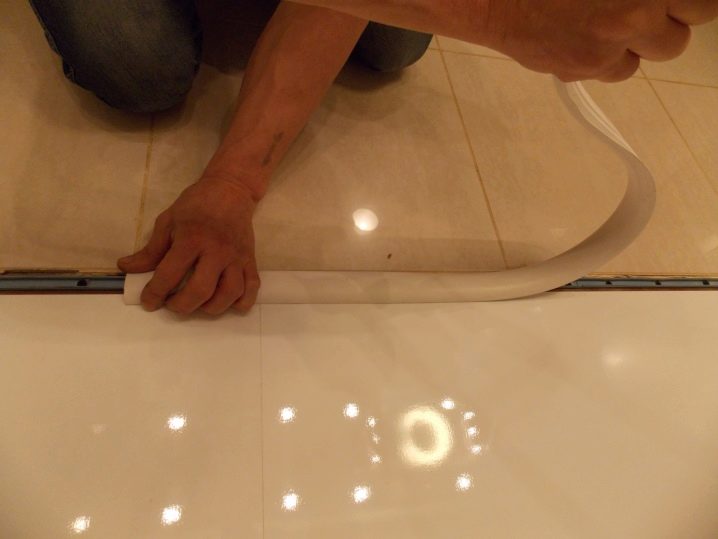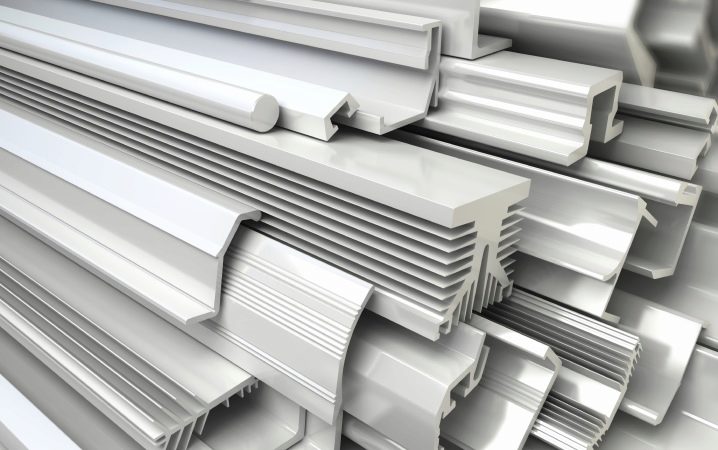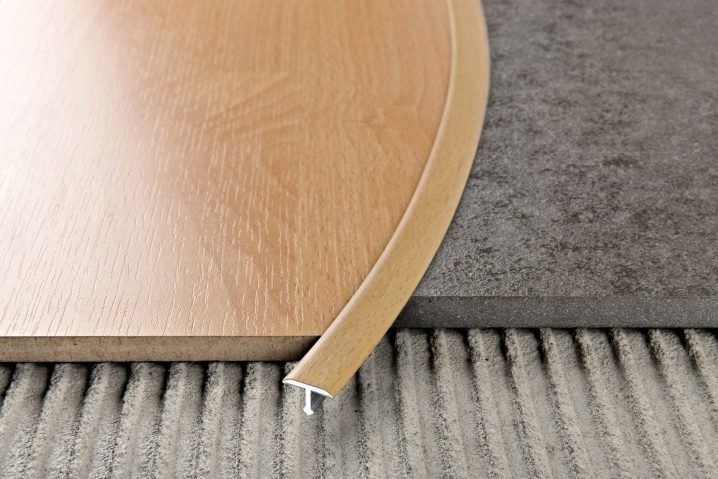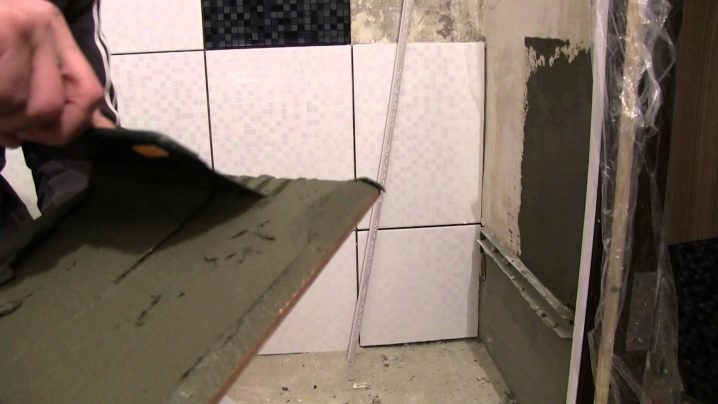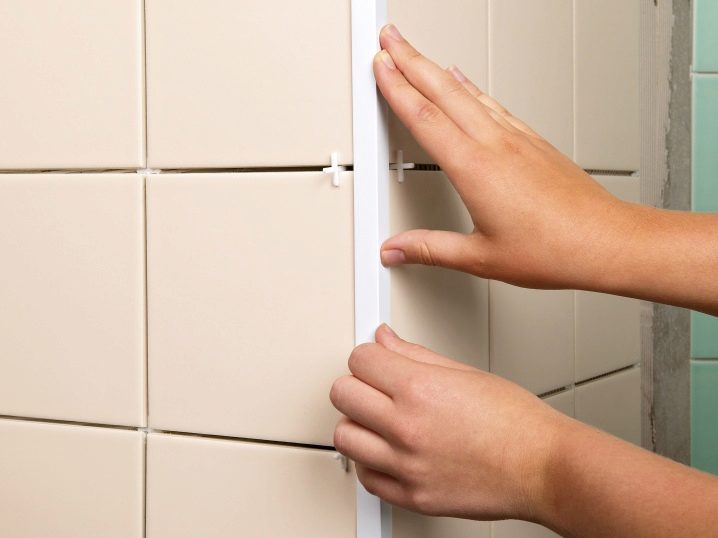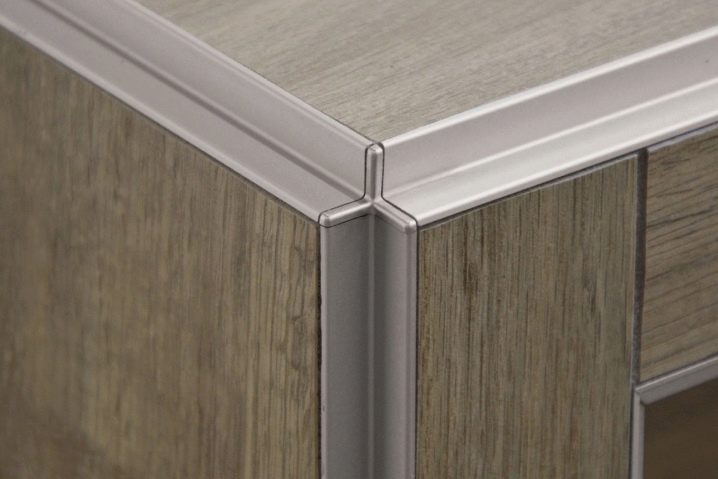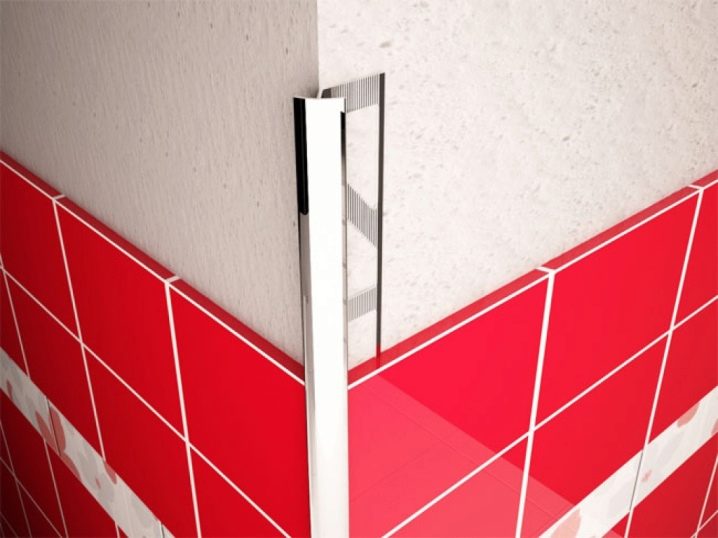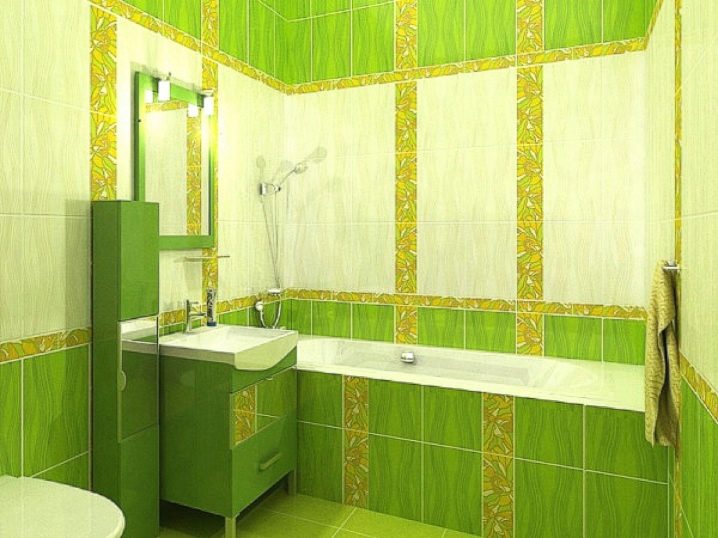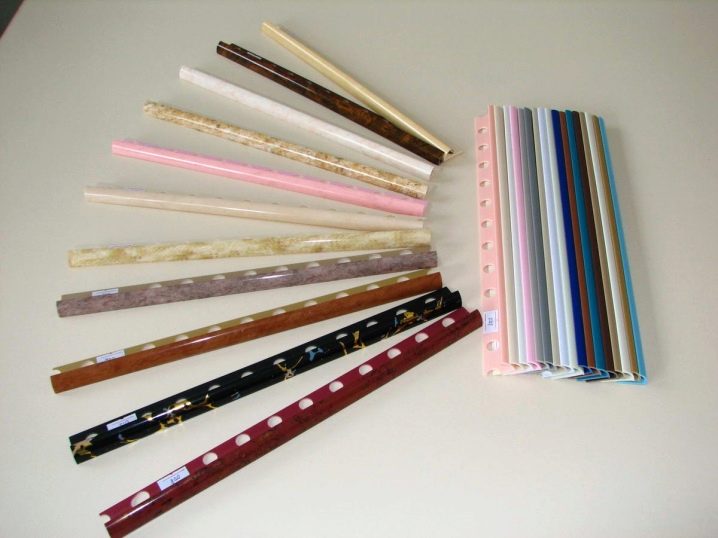How to choose an aluminum profile for a tile?
When entering a new apartment, every person wants his home to be beautiful, comfortable and cozy. The same criteria are taken into account when performing repair work. Transforming housing (in particular, kitchen, bathroom and toilet), many make a choice in favor of ceramic tiles, which in these rooms looks more advantageous than wallpaper. An integral part of this design is the profile. Few people know how to choose an aluminum profile for a tile, but everyone understands that without this element it is impossible to lay a tile beautifully.
Special features
The profile for tile is a long stick, with the help of which the issue of joining ceramic plates is quickly solved. In addition to the connective function, this element helps to hide some tile defects (for example, chipped edges), which are sometimes formed in the process of cutting decorative plates.Aluminum profiles, which are most often used in the process of surface cladding, have a standard length of 250 cm. With their help they make out the corners, and the finish gets the final appearance, it becomes more elegant and attractive.
The modern market of building materials is distinguished by a large assortment of various models of profiles, which differ among themselves by the raw material of execution, variants of fasteners to the surface, and appearance.
To the most popular subspecies of profiles, which, according to builders, best used during the installation of ceramic tiles include:
- aluminum;
- PVC models;
- corner;
- decorative (outdoor).
Trims (another name for profiles) are also divided by function. Make connecting, protective and decorative, and compensatory models.
The first are necessary for the junction of two dissimilar coatings. (for example, tiles and carpet). The latter are used so that different types of tile (for example, in the corners between the walls) have a beautiful appearance and are not dissonant with the overall design. Also needed to protect the tiles from destruction (in cases where the edge of the decorative fabric touches the door).Compensatory trims are indispensable when facing large rooms, where there is no way to avoid expansion joints. Compensatory profiles compensate for thermal expansion of the tile when changing temperature. These trims are often equipped with decorative trim.
The most common profile is aluminum. It can be made of pure aluminum or with the addition of various impurities (brass, stainless steel). They differ in form. Mainly presented in a rounded or flat design, there is also an L-shaped profile (end), T-shaped, it can have different colors and decor.
Profiles with a rounded shape are used for exterior and interior decoration, they allow to emphasize its accuracy, clarity of lines and beauty. Profiles of a flat shape are used for cornering.
Aluminum profile differs in a number of positive aspects, which include:
- resistance to corrosion processes;
- low weight;
- reasonable price;
- durability;
- the ability to not change its shape and structure during the period of temperature differences;
- attractive appearance;
- ease of care;
- plastic;
- reliability.
Aluminum profiles are most often used when it is necessary to fasten straight and curvilinear joints. Due to the characteristics of these trim materials, there is no risk of mold or corrosion, even in rooms with high humidity. The installation of the profile between the tiles is carried out with a special tile adhesive that looks like a ceramic border or frieze.
The use of aluminum profiles for tiles allows you to solve many technical issues, contributes to a beautiful type of finish. This type of building products is perfect for decorating rooms of different functionalities, it can be used to hide flaws and emphasize the advantages of decoration.
Purpose
Some people do not understand why you need a profile for a tile, what is the meaning of its application. There are some reasons that the use of trim is very obvious and logical.
To cut a tile at an angle is quite difficult. Any inaccuracy will immediately manifest itself. The surface on which the tile is laid can no longer be called ideal. If you use a corner, all the edges of the tile will be intact and smooth, but you won't need it at all.
Corner for edging tiles has a groove, which fits the edge of the decorative plate. Due to this feature, all irregularities and defects become invisible, and the angle is neat.
The profile is a decorative element. For example, a combination of a metallic corner with a red tile will become an original design decision.
Not do without trim when planning rooms of complex configurations, where there are many corners and turns. These products facilitate the work, it is easy to carry out the most complex elements with them.
How to choose?
Profile can be selected only when the tile is purchased. The modern building materials market offers different models of aluminum profiles that will satisfy the taste and needs of the most demanding esthete. After purchasing a connecting product, it will only be necessary to install all the details of the interior, which should not cause problems, even if the installation of ceramic tiles will not be performed by a specialist.
When choosing a profile, it is necessary to take into account such criteria:
- basic profile characteristics (width, length, height), the number of strips in the package;
- technical features (main profile material, type of attachment and finishing);
- external parameters (color, availability of decorative details).
It is important to consider the cost. As a rule, cheap models of unknown manufacturers at the time of working with them can show all their flaws, so experts strongly recommend not to buy the most budgetary options: it is better to overpay a little, but to get a quality product that does not cause trouble.
By choosing a decent profile model for a tile with a price that corresponds to its properties and quality, buyers are guaranteed to get the perfect decoration of the coating in any room chosen.
How to install aluminum profile, see the following video.
.
